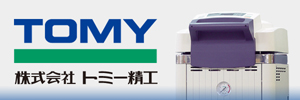PI-138:Isocitrate lyase controls bacterial respiration under oxidative stress
1Korea University, 2University of Illinois, 3Cornell University
Glyoxylate shunt is known as a short-cut of TCA cycle avoiding carbon dioxide-producing steps and essential for acetate and fatty acid metabolisms. Upregulation of glyoxylate shunt under oxidative stress, antibiotics, and host infection conditions also implies its important roles for stress defense and pathgenesis. Unlike Escherichia coli, isocitrate lyase (aceA), and malate synthase (glcB) genes are not in a operon in many bacterial species including P. aeruginosa, which led to different physiological responses of the aceA and the glcB mutants under those stress conditions. In contrary to our expectation, deletion of aceA gene made cell grow better under oxidative stress and antibiotic treatment, which could be attributed to less NADH production. Transcriptome data suggested that the aceA mutant underwent metabolic shift to aerobic denitrification, which is further experimentally supported: upregulaton of denitrification-related genes, lower oxgen consumption without ATP reduction , increasd production of dentirifiction intermediates, NO and N2O, and more cyanide resistance. The aceA mutant could overproduce thicker exopolysaccharide, which might be beneficial for aerobic denitrification process. Global bioinformatic analysis showed that only microorganisms capable of aerobic metabolism have the glyoxylate shunt. Our data suggested that isocitrate lyase evolved from aerobic adaptation appears to make the cell bypass the TCA cycle for not only saving the carborn source, but also tolerating oxidative stress through less NADH production.
keywords:glyoxylate bypass,aerobic denitrification,oxidative stress,gene expression,glyoxylate shunt,biofilm formation




